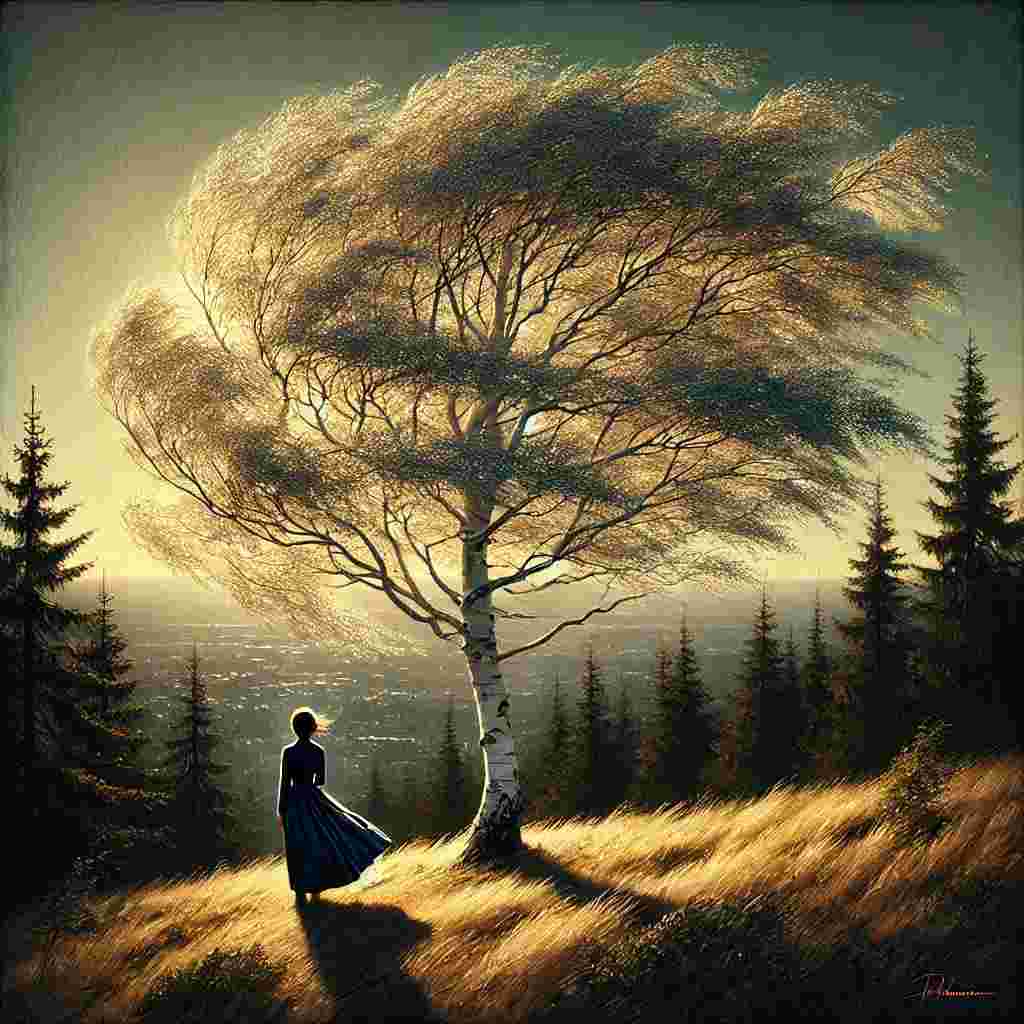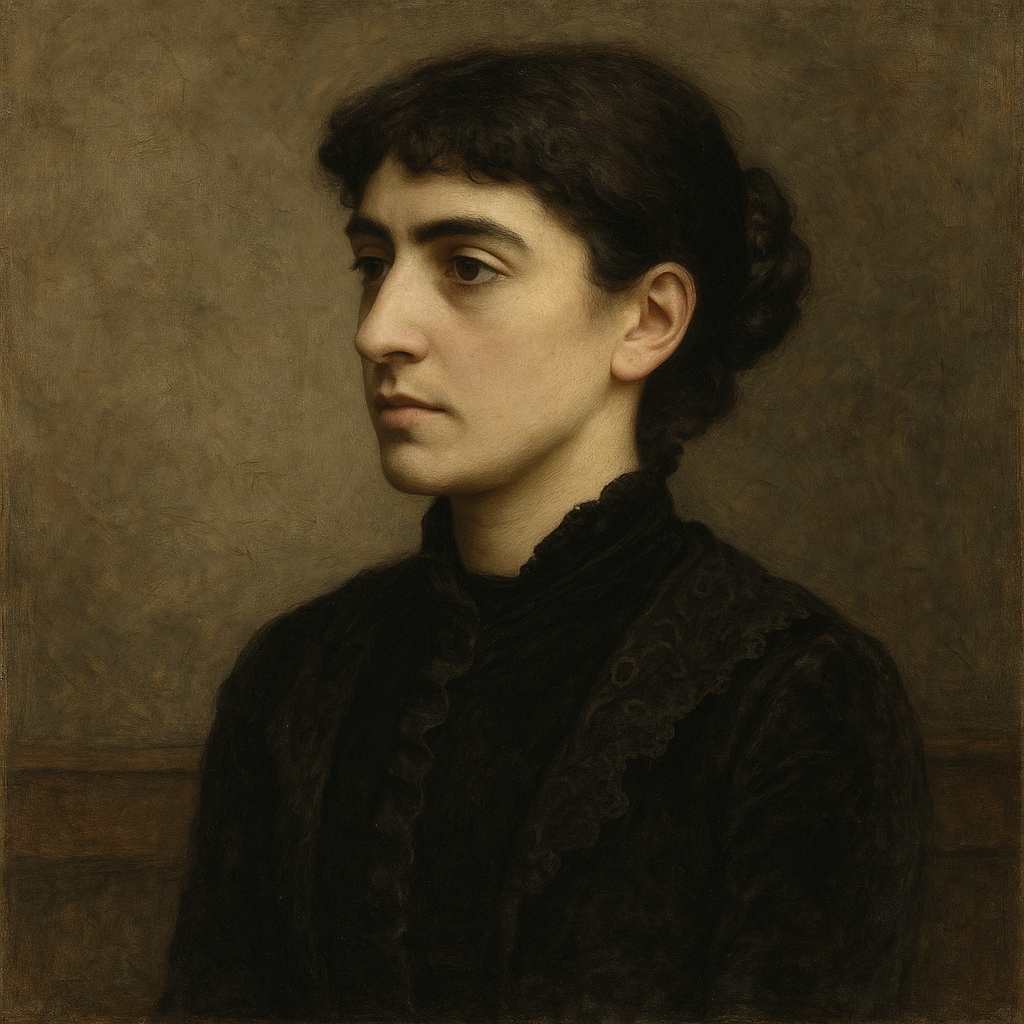The Birch Tree at Loschwitz
Amy Levy
1861 to 1889

At Loschwitz above the city
The air is sunny and chill;
The birch trees and the pine trees
Grow thick upon the hill.
Lone and tall, with silver stem,
A birch tree stands apart;
The passionate wind of spring-time
Stirs in its leafy heart.
I lean against the birch tree,
My arms around it twine;
It pulses, and leaps, and quivers,
Like a human heart to mine.
One moment I stand, then sudden
Let loose mine arms that cling:
O God! the lonely hillside,
The passionate wind of spring!
Amy Levy's The Birch Tree at Loschwitz
Amy Levy’s "The Birch Tree at Loschwitz" explores themes of isolation, longing, and connection through the speaker’s momentary, almost spiritual bond with a birch tree. Set on a hillside above the city of Loschwitz, Levy uses natural imagery and personification to evoke a deep sense of both intimacy and estrangement, capturing the emotional turbulence of a fleeting, yet intense, connection with nature.
Stanza One: Setting and Atmosphere
The poem opens with a description of Loschwitz, setting the scene “above the city” in “sunny and chill” air. The phrase “above the city” places the speaker in a space removed from human life, reinforcing a sense of isolation while highlighting the elevation both physical and emotional. The "sunny and chill" air creates an atmosphere that is at once bright and cold, suggesting a paradoxical mix of warmth and distance, mirroring the speaker’s complex feelings. The birch and pine trees that “grow thick upon the hill” symbolize resilience and strength, but they also create a backdrop of separation and quietude, as the speaker is alone in this dense natural setting.
Stanza Two: Personification of the Birch Tree
The second stanza introduces a lone birch tree, “tall, with silver stem,” which “stands apart.” The tree’s isolation mirrors the speaker’s own sense of being alone, as the birch is set apart from the surrounding growth. Levy’s description of the tree’s “silver stem” conjures an image of elegance and purity, evoking both beauty and fragility. This birch tree, though part of the natural landscape, stands out as a unique presence—almost a partner to the speaker’s solitude.
The birch is further personified with “the passionate wind of spring-time” stirring within its “leafy heart.” This metaphorical “heart” gives the tree an inner life, as if it possesses emotions similar to the speaker's own. The “passionate wind” suggests both the awakening of nature and a stirring within the speaker’s soul. The season of spring often symbolizes rebirth, passion, and youthful energy, qualities that awaken a longing for connection. The fact that the wind stirs the birch tree’s “heart” suggests a shared pulse between the speaker and the natural world, bringing the tree closer to a living, feeling companion.
Stanza Three: A Moment of Intimacy
In this stanza, the speaker leans against the birch tree and embraces it, “arms around it twine.” This physical embrace signifies a moment of intimacy, a reaching out for companionship or solace. The description of the tree’s response—“It pulses, and leaps, and quivers, / Like a human heart to mine”—reflects an intense, almost mystical connection. Through these tactile sensations, Levy blurs the line between the speaker and the tree, suggesting that nature, like a fellow human, can provide the comfort of companionship.
The tree’s “pulses” and “quivers” bring it alive, as if responding to the speaker’s need for connection with the sympathy of a “human heart.” This anthropomorphic description reveals the speaker’s yearning to feel understood and mirrored, an expression of emotional loneliness that finds temporary relief in the embrace of the natural world. The momentary sense of unity with the birch offers a brief solace, but it is fleeting.
Stanza Four: The Realization of Solitude
The final stanza introduces a sudden shift. After holding the tree close, the speaker lets go: “One moment I stand, then sudden / Let loose mine arms that cling.” The sudden release of her grip implies a realization that this connection is ultimately illusory. The repetition of “O God!” and the exclamatory tone signal an epiphany of loneliness as the speaker confronts the reality of her solitude.
The lines, “O God! the lonely hillside, / The passionate wind of spring!” capture the speaker’s anguish and frustration at her predicament. Even surrounded by nature’s vitality, she is ultimately alone, and the “passionate wind of spring,” while stirring and beautiful, reminds her of the transitory, unattainable nature of true connection. This final invocation of God is a cry for understanding or perhaps a plea for comfort in the face of isolation, underscoring her vulnerability.
Conclusion
In "The Birch Tree at Loschwitz," Amy Levy employs the birch tree as a symbol of both companionship and isolation, capturing a complex interaction between the speaker and nature. The poem moves from connection to alienation, using the birch as a reflection of the speaker’s own loneliness and longing for intimacy. Through Levy’s use of personification and vivid imagery, the birch tree becomes a temporary surrogate for human connection, even as the speaker realizes that her embrace of nature cannot substitute for real companionship. This poignant realization culminates in a final expression of longing, leaving the reader with a haunting sense of the inescapable solitude that defines much of human experience.
This text was generated by AI and is for reference only. Learn more
Want to join the discussion? Reopen or create a unique username to comment. No personal details required!



Comments
No comments yet. Be the first to comment!